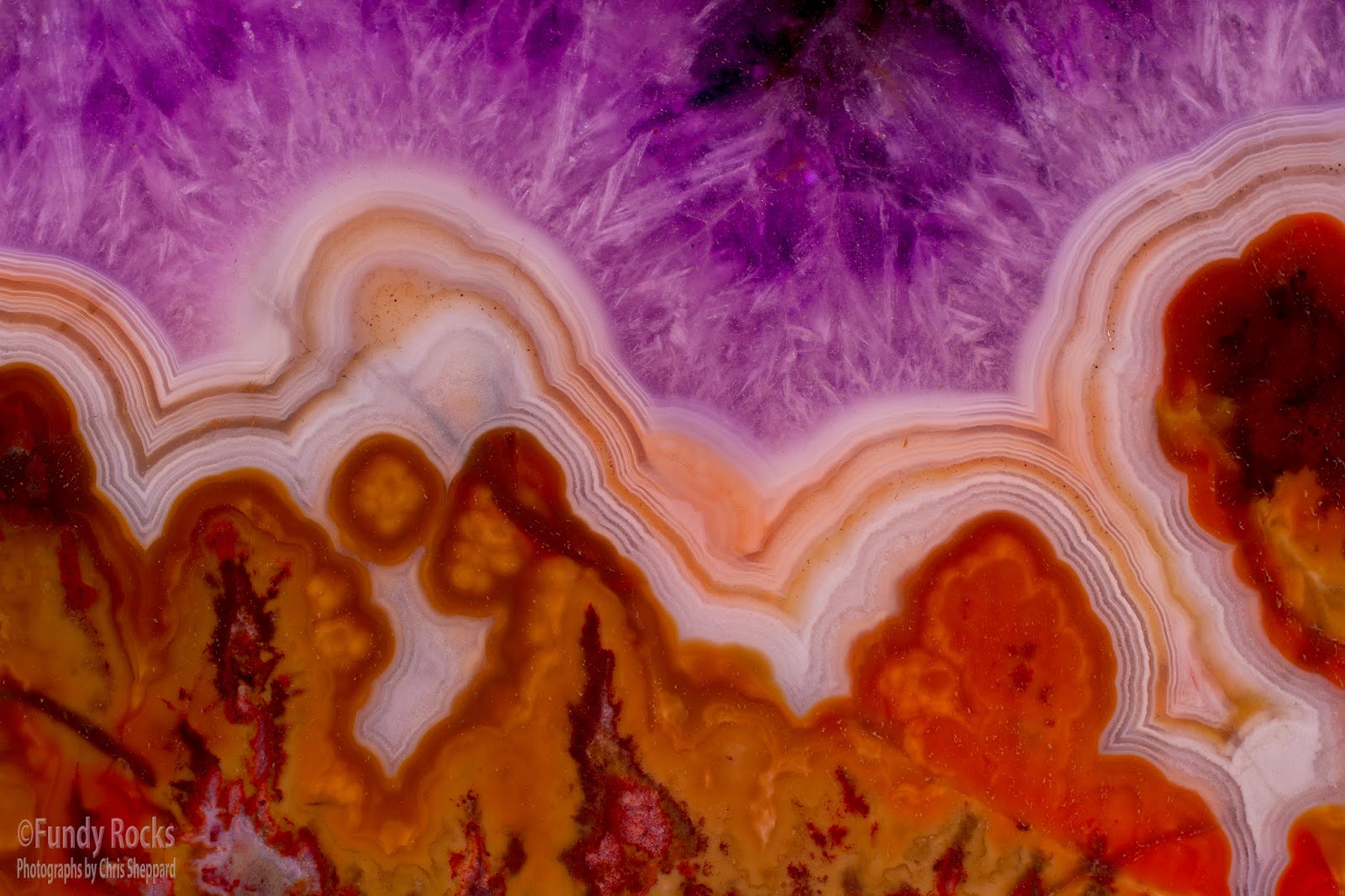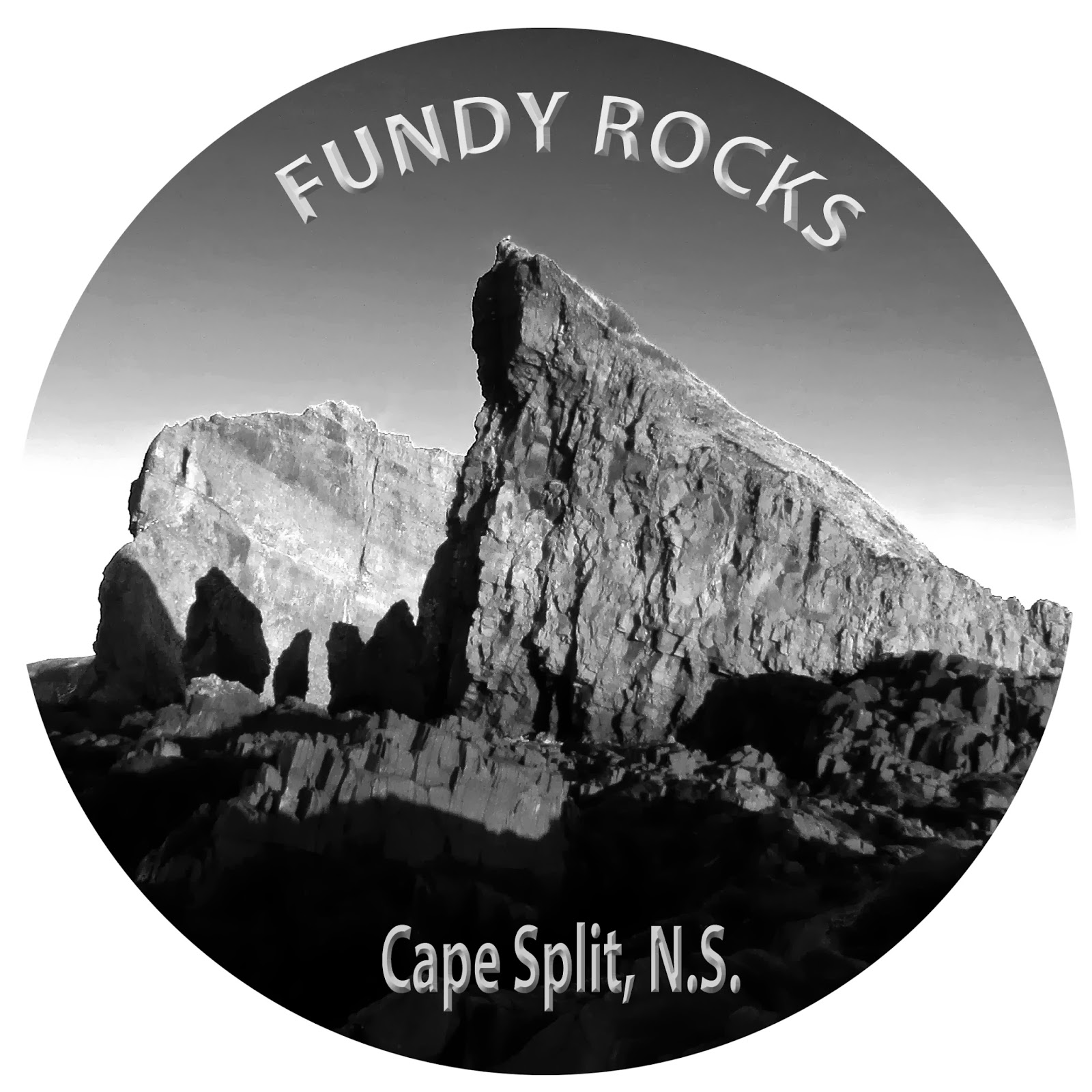Nova Scotian Agate
as
Art
Photographs by Chris Sheppard
 | ||
| Luminous Agate Cape Blomidon, Nova Scotia
Technical Notes
Without exception these mineral detail photographs were made
with a Nikkor 40mm micro lens using my 24.2 MP Nikon DSLR attached to a
Manfrotto tripod system. Specimens were housed in a diffused full
spectrum light box. All of the photographs were “cropped” and framed in camera
often using a vari-angle Live View to fine tune composition. The unpolished
surfaces of some specimens were given a thin coat of mineral oil. Using mirror
lock-up and a cable shutter to avoid minute camera shake I shoot a RAW
image that holds all of the information captured in 14 – bit channels per
colour. I use Adobe RGB colour space and process my RAW files using Adobe
Camera RAW and convert them into jpegs using Photoshop Elements (A popular
editing software). All photographers have to convert and process RAW images
based on their own personal taste and preferences. RAW processing gives you
complete creative control including custom white balance. I personally try to
achieve the incredible colours you would see if the specimen was wet with salt
water on a cloudy day!
Because of the sensitivity of the macro photography I may on occasion need to digitally remove a fine piece of lint or dust invisible to my eye at the time of exposure or soften a scratch left from the diamond blade used to cut the agate in postproduction. All of these agates were cut using a diamond slab saw that may leave scuffs and scratches that can distract from the image as a whole, especially when they are blown up for printing. Some of the agates have never been polished so a thin layer of mineral oil is applied to replicate a polish. Even without a polish the cut agate has a highly reflective surface when wet and shows every imperfection. The fractures occur naturally and become part of the composition.
I hope you have enjoyed this gallery of Nova Scotia agate as Art. Here is how to find out more about Fundy Rocks:
Chris Sheppard PhotographyPaddy's Island Moonrise by Chris Sheppard
Here are two links to my photostreams of high resolution images from the Annapolis Valley, Cape Split, Cape Blomidon and beyond on Flickr and 500px. All of these images are available as high quality prints in many different sizes and formats. All of the printing is done locally. Shipping is available. Rock specimens may also be available to purchase. Contact Fundy Rocks at fundyrocksgroup@gmail.com for more details. Follow the links here:
|

















No comments:
Post a Comment